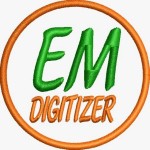Introduction:
Embroidery, a traditional art form dating back centuries, has undergone a remarkable transformation in the digital age. At the forefront of this evolution is the intricate process of logo digitizing, a craft that seamlessly bridges the gap between traditional stitching and modern design. In this article, we embark on a journey through the fascinating world of logo digitizing in contemporary embroidery, exploring its origins, techniques, and its profound impact on the way brands and designers bring their logos to life on fabric.
Origins of Logo Digitizing:
Logo digitizing emerged as a response to the demand for more intricate and precise embroidery designs. Traditionally, artisans manually translated logos and designs into stitch patterns, a labor-intensive and time-consuming process. With the advent of digital technology, the art of logo digitizing was born, enabling a more efficient and accurate translation of complex designs into embroidery-ready formats.
The Digital Palette:
One of the key aspects of embroidery logo digitizing is the use of a digital palette. Designers leverage specialized software to convert intricate logos and brand emblems into a language that embroidery machines understand. This digital translation is a meticulous process that involves assigning stitch types, directions, and densities to every element of the design. The result is a digital blueprint that guides the embroidery machine in recreating the logo with precision.
Precision Stitching:
Logo digitizing is all about achieving precision in stitching. The digital instructions guide the embroidery machine to create various types of stitches, such as satin stitches for smooth surfaces, fill stitches for larger areas, and running stitches for outlines. The meticulous planning and execution of each stitch contribute to the final embroidered masterpiece, ensuring that the logo retains its clarity and detail on fabric.
Challenges and Innovations:
While logo digitizing for embroidery has revolutionized the world of embroidery, it comes with its set of challenges. Designers often grapple with ensuring the translation maintains the essence of the original logo, especially when dealing with intricate details or gradients. However, continuous technological advancements have led to innovative solutions, such as the use of 3D embroidery and multi-layer stitching, adding depth and texture to the final embroidered piece.
Brand Representation:
In the contemporary business landscape, a logo is more than just a symbol; it is the visual representation of a brand's identity. Logo digitizing plays a pivotal role in ensuring that this representation is faithfully reproduced in embroidery. The ability to seamlessly translate complex logos onto various fabric textures allows businesses to maintain consistency in their branding across a wide range of promotional materials, from uniforms to merchandise.
Conclusion:
The journey of logo digitizing in contemporary embroidery is a testament to the harmonious integration of tradition and technology. As designers continue to push the boundaries of creativity and innovation, logo digitizing remains a crucial step in the evolution of embroidery as an art form. From the digital palette to precision stitching, each step in the process contributes to the creation of embroidered masterpieces that not only showcase the beauty of traditional craftsmanship but also reflect the dynamic spirit of the digital age.





Comments